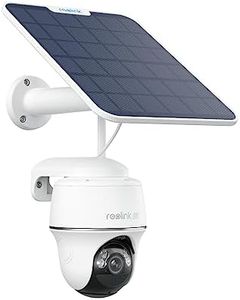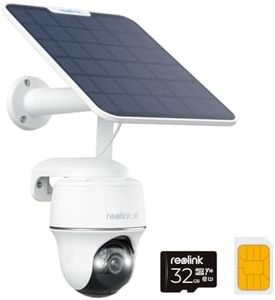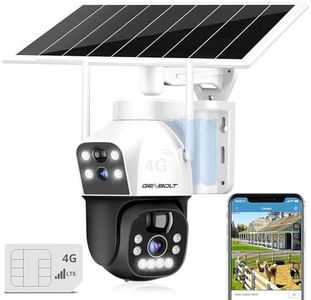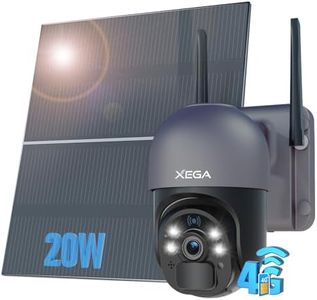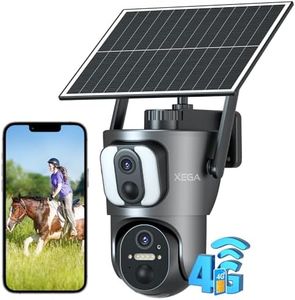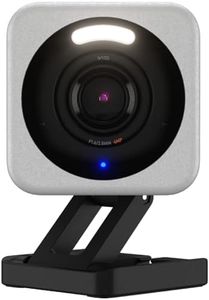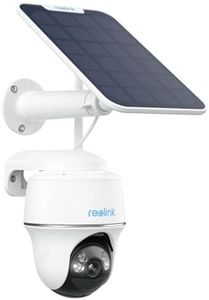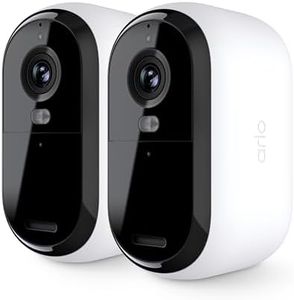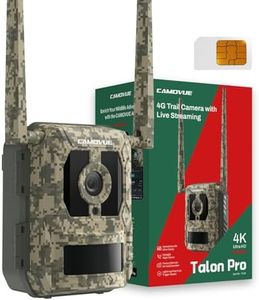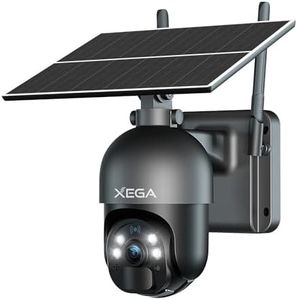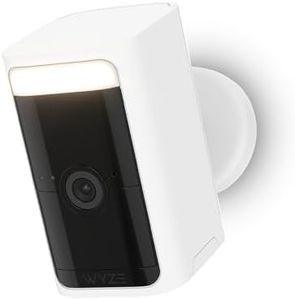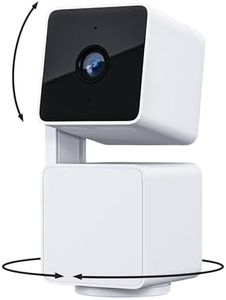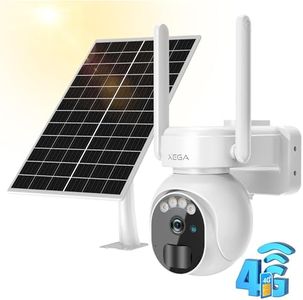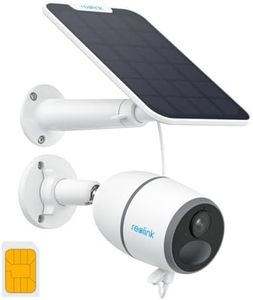We Use CookiesWe use cookies to enhance the security, performance,
functionality and for analytical and promotional activities. By continuing to browse this site you
are agreeing to our privacy policy
10 Best Cellular Security Cameras
From leading brands and best sellers available on the web.Buying Guide for the Best Cellular Security Cameras
Cellular security cameras are a smart solution when you need to monitor areas where there is no traditional Wi-Fi or wired internet connection, such as remote locations, construction sites, or rural properties. These cameras connect to the internet via cellular networks (like 4G or LTE), sending video footage and alerts to your phone or computer. When choosing the right cellular security camera for your needs, it's important to focus on key specifications that determine how well the camera will perform in your specific situation. Assess your needs—like where you'll install the camera, what you want to monitor, and how often you'll view footage—so you can match features to your expectations and environment.Cellular Network CompatibilityThis specification tells you which mobile networks the camera can use, such as 4G LTE or sometimes 3G. It's important because the camera needs to have a strong, reliable signal to send you footage or notifications. Networks vary depending on your location and the carriers that provide service there. When navigating network compatibility, check if the camera supports the main carriers in your area and which SIM cards it accepts. If you're in a rural or remote area, prioritize cameras compatible with the strongest available network for that location. Your choice should be guided by the quality of cellular service where you plan to install the camera.
Power SourceThe power source refers to how the camera gets its energy—often via rechargeable batteries, solar panels, or plug-in power. This is crucial because the environment can limit your options. Battery-powered cameras are flexible and easy to install, but require recharging or battery changes. Solar-powered models use solar panels to keep the battery topped up, making them almost maintenance-free in sunny areas. Plug-in cameras need an outlet, which is often hard to find in remote spots. Choose based on the availability of electricity and how often you can visit the camera to maintain it. For locations where visits are rare, go for solar or long-lasting batteries.
Video Quality (Resolution)Video quality is indicated by resolution, such as 720p (HD), 1080p (Full HD), or 2K and above. Higher resolution means the camera can capture more detail, which is important for identifying people or events in your footage. Cameras with lower resolution save on data usage and storage but may produce blurry images when zooming in on details. If you need to clearly see faces or license plates, aim for at least 1080p resolution. For basic monitoring or saving data and battery, a lower resolution may suffice. Consider how detailed you need the footage for your security purposes.
Storage OptionsStorage options indicate how and where the camera saves video clips, either on a local microSD card, in the cloud, or both. Local storage can save footage directly in the camera, which is useful if you want access on-site but can be lost if the camera is stolen. Cloud storage uploads video to a secure online server, letting you access footage from anywhere, but often requires a subscription and uses cellular data. Think about your access needs and whether you're okay with ongoing fees. If frequent access to recorded footage is important, prioritize cloud storage; if you want everything self-contained, local storage may be enough.
Night VisionNight vision shows how well the camera can see in the dark, typically through infrared LEDs. This is essential for 24/7 security, as many incidents occur at night. Night vision range is measured in meters or feet, indicating how far the camera can see clearly at night. Some cameras offer color night vision, which gives more detail. For monitoring larger or poorly lit areas, pick cameras with a longer night vision range. For smaller, well-lit sites, shorter ranges may be sufficient. Always assess how much of your space you want clearly visible in the dark.
Motion Detection and AlertsMotion detection means the camera can sense movement and trigger alerts or recording. It’s important for saving data and battery, as it records only when something happens. Cameras vary in how precisely they can detect motion—some can distinguish between people, vehicles, or animals, reducing false alarms. Others simply react to any movement. Think about your monitoring needs: if false alarms would be a nuisance, look for advanced features or adjustable sensitivity. If you just want basic notification when anything moves, simpler motion detection may be enough.
Weatherproof RatingThe weatherproof rating, often shown as IP65, IP66, or IP67, tells you how well the camera handles exposure to dust and water. This is crucial if you plan to install your camera outdoors. A higher rating means better protection against harsh conditions. Cameras with ratings like IP65 can resist rain and dust; IP66 or higher can handle heavier rain or even brief immersion. If your location faces extreme weather, opt for a higher rating to ensure consistent performance. For sheltered or indoor areas, lower ratings may suffice.
